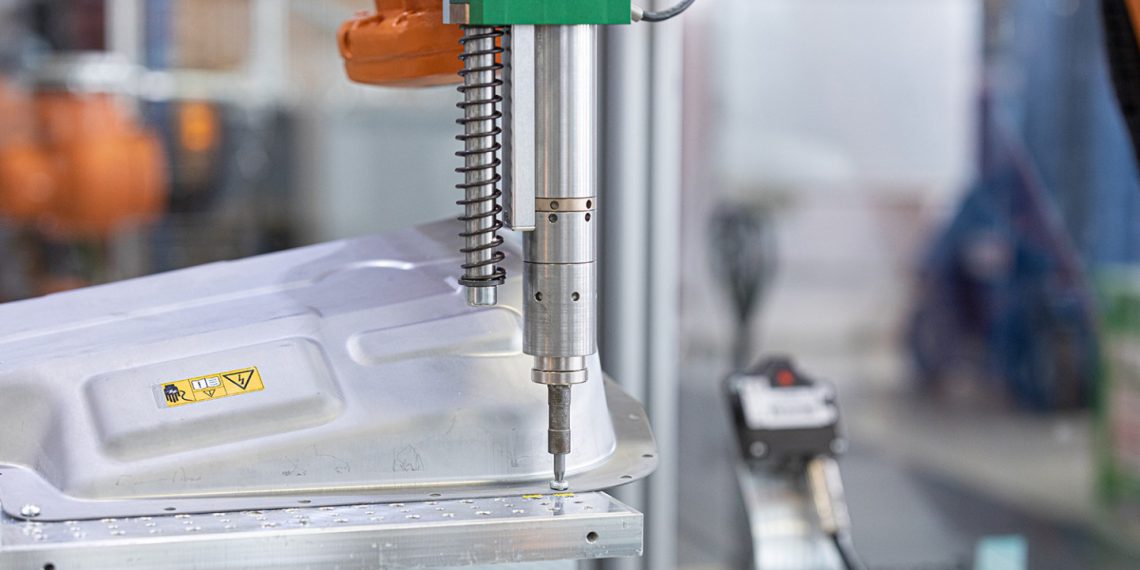The spent batteries of electric cars contain valuable raw materials that can still be used. In order to be able to recycle them, a research team from the Center for Digitized Battery Cell Production (ZDB) at Fraunhofer IPA is developing a robotic cell with a wide variety of tools. It should be able to carry out all the necessary disassembly steps and be suitable for all battery types.
Electric drives are becoming increasingly important for cars. Last year, around 13 percent of new vehicles in this country were already equipped with an electric drive, sometimes in combination with an internal combustion engine. By 2030, there could be almost 50 million electric cars on the roads worldwide, if all the announcements come true.
This trend, due to climate change, creates a recycling problem: More and more batteries are accumulating that need to be refurbished. Since a battery lasts about ten years on average, the problem is becoming more pressing every year. A team of scientists and technicians from various institutes is therefore looking for a way to cope with this impending flood. The “Industrial Disassembly of Batteries” (DeMoBat) research project, coordinated by the Fraunhofer Institute for Manufacturing Engineering and Automation IPA, aims to deliver a universal solution that is suitable for all work steps and battery types.
Giving batteries a second life
The components of a battery cell are to be dismantled according to type and then tested to determine whether they are still good enough for direct reuse. In this way, second-life batteries will one day be made from used components. If the used components are no longer suitable for this purpose, at least their chemical components should be processed. Used batteries contain many raw materials that can still be used, such as nickel, cobalt, manganese and lithium. To get at them, the component first has to be taken apart: Wires, cables, plugs, seals, screws, battery cells, electronic components, brackets — it all has to be dismantled.
Lorenz Halt from the Robotics and Assistance Systems department at Fraunhofer IPA is responsible for this part of the research project. The challenge here is that the work is to be carried out by an industrial robot rather than a worker. This is all the more difficult because car batteries are not standardized. Different makes of car, even different models, each contain different power storage units. That’s why the disassembly system has to be very flexible. Halt therefore compares it to a Swiss army knife.
Robot unscrews or mills the housing
A two-by-three-meter table with a flexible clamping system that can firmly grip any battery serves as the work surface. There, the robot first opens the lid by unscrewing the screws. Intelligent image processing shows it the way. But that doesn’t always work, because after ten years in the wind and weather, some screws are corroded and can only be loosened with more. Thanks to machine learning, the robot recognizes early on whether it can reach its goal with the screwdriver or whether it needs to reach for the milling machine.
“It could, of course, mill right away,” says researcher Halt. “But that’s not the optimal strategy because it creates metal chips that could lead to a short circuit and ultimately a fire.” But the plant is also equipped for such cases: If a fire breaks out, a slide unceremoniously clears all parts lying on the work table into an extinguishing bath.
First demonstrator as early as this fall
As with the screws, the devil is in the details elsewhere, too. Halt and his team had to solve numerous problems and develop new tools. For example, a kind of can opener is used to loosen seals. And for lifting out the individual battery cells, which are glued together, the experts involved have developed a kind of mini jack. Ingenuity is also required to handle cables and connectors that are difficult to grip.
The DeMoBat research project, which will run for a total of three years, has just reached the halfway point. The interim results are promising: a first demonstrator should be on display as early as this fall. “In the future, we also want to develop solutions that make it possible to process the recovered and still intact components of a battery for a further life cycle and reassemble them into a new system,” announces project manager Max Weeber.

















